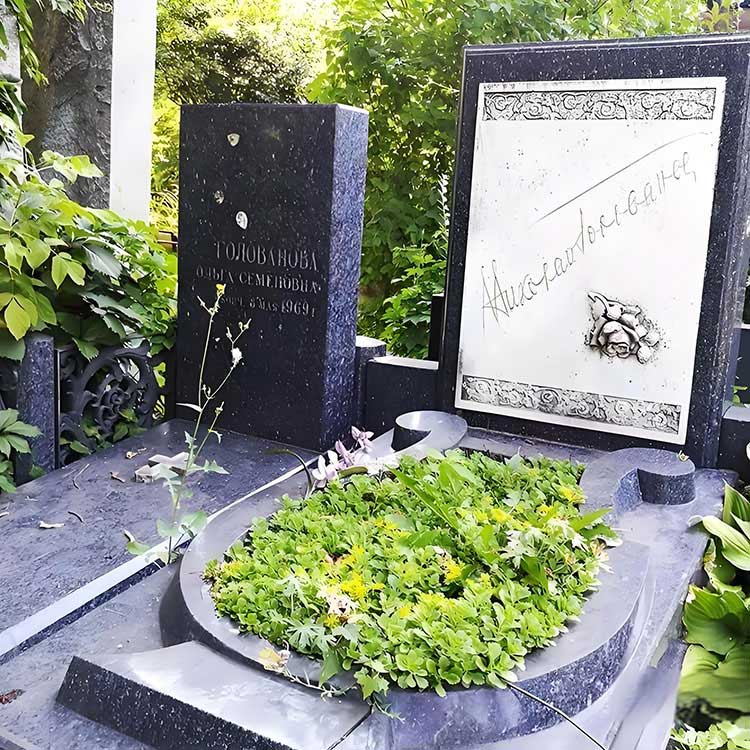What Is the Significance of a Tombstone in Commemorating Loved Ones?
2025-01-07
A tombstone, often referred to as a gravestone or headstone, is a common sight in cemeteries around the world. It marks the final resting place of a loved one, but beyond its physical presence, a tombstone carries deep emotional and cultural significance. Whether simple or elaborate, tombstones have long been used to honor the deceased, provide a lasting memory, and offer comfort to those left behind. But what exactly is the role of a tombstone in commemorating a loved one, and how has its design and meaning evolved over time?
What Is a Tombstone?
At its core, a tombstone is a monument placed at a burial site to mark the grave of a deceased person. Traditionally made from durable materials like granite, marble, or sandstone, tombstones are engraved with the name of the deceased, along with key information such as their birth and death dates. In many cases, the tombstone also features inscriptions that express personal sentiments, religious symbols, or epitaphs that reflect the personality or achievements of the person being memorialized.
While the design of tombstones can vary significantly depending on cultural traditions, personal preferences, and available resources, they all share the common purpose of commemorating a life that has passed.
The Role of a Tombstone in Honoring the Deceased
1. A Lasting Tribute:
One of the most important functions of a tombstone is to serve as a lasting tribute to the life of the deceased. It marks their place of rest for future generations to visit, reflect upon, and remember. A well-crafted tombstone becomes an enduring reminder of a person's legacy, allowing family members, friends, and even strangers to honor the individual long after they have passed away.
2. Symbol of Respect and Reverence:
In many cultures, placing a tombstone at a grave site is a gesture of respect and reverence for the deceased. It signifies that the person's life was valued and that their memory will be preserved. The act of choosing and inscribing a tombstone often reflects the cultural and religious practices of the family or community, reinforcing the idea that the deceased’s life deserves recognition and respect.
3. A Space for Reflection and Grief:
Tombstones provide a physical space for loved ones to visit and reflect on the life of the deceased. In times of grief, many people find solace in visiting the grave of a loved one, where they can mourn, pray, or simply remember the person in their own way. The tombstone acts as a focal point for these emotions, helping those left behind to process their loss and find closure.
4. Cultural and Religious Significance:
The design and symbolism of tombstones can vary widely based on cultural and religious beliefs. In Christian cultures, for example, crosses and angels are common symbols of faith and the afterlife, while Jewish tombstones often feature Star of David symbols or inscriptions in Hebrew. Other cultures may incorporate specific motifs or carvings that reflect their spiritual beliefs or family heritage.
The tombstone's symbolism may also reflect societal values. In some communities, elaborate tombstones are used to signify the status or accomplishments of the deceased, such as military service, professional achievements, or a long life. These markers often stand as a testament to the impact the person had during their lifetime.
The Evolution of Tombstone Design
Over the centuries, tombstones have evolved in both form and function. Early tombstones were often simple markers made of stone or wood, with little to no engraving. In ancient civilizations like Egypt, elaborate monuments such as pyramids and obelisks were used to honor the dead, reflecting both the wealth of the deceased and the belief in an afterlife.
As time progressed, tombstones became more standardized. During the medieval period in Europe, the use of intricate carvings became popular, with many tombstones adorned with religious imagery, such as angels or saints, to symbolize spiritual devotion. These designs also represented the transition from life to death and the hope for an eternal afterlife.
In modern times, tombstone designs have become more varied. Today, families can choose from a wide range of materials, shapes, and designs, from traditional upright stones to more contemporary flat markers. Personalized inscriptions, including quotes, poems, and images, are common, reflecting the deceased’s personality, beliefs, or interests.
Technology has also played a role in the evolution of tombstones. Laser engraving and 3D etching allow for more detailed and customized inscriptions, while some tombstones are now equipped with QR codes or digital memorials that allow visitors to access online information about the deceased or leave messages of remembrance.
Why Are Tombstones Still Important Today?
In an era where the practice of cremation is on the rise, some may question the continued relevance of traditional tombstones. However, the significance of these markers remains strong for several reasons:
1. Preservation of Heritage and Family History:
Tombstones help preserve the memory of ancestors, especially in families with a long history. By visiting the graves of past generations, people can connect with their heritage and understand the stories of those who came before them. This connection helps to foster a sense of continuity and belonging.
2. A Connection to Place:
A tombstone serves as a physical representation of a loved one’s presence in a specific location. It allows family members and friends to return to the grave site and feel a connection to the person they’ve lost. The grave site becomes a place to honor that person, reflect on their life, and share memories, making it an essential part of the grieving process.
3. A Symbol of Immortality:
While a tombstone marks the physical death of an individual, it also symbolizes the continuity of their spirit and memory. The inscription on a tombstone serves as a testament to the idea that, although a person has passed away, their impact continues to live on in the memories of those they left behind.
4. Respect for Cultural Traditions:
For many people, the act of placing a tombstone is a deeply important cultural or religious tradition. It is seen as an essential part of the process of honoring and remembering the deceased, and for many, it offers a sense of closure. The continued use of tombstones reflects the enduring importance of these traditions in modern society.
Conclusion: The Everlasting Value of a Tombstone
In the end, a tombstone is much more than just a piece of stone or a marker of death. It is a symbol of respect, love, and remembrance. It serves as a lasting tribute to the deceased, a place for reflection and mourning, and a connection to our shared cultural and religious traditions. As time goes on, the role of tombstones may continue to evolve, but their importance in commemorating the lives of those we’ve lost will remain a timeless part of human life.



